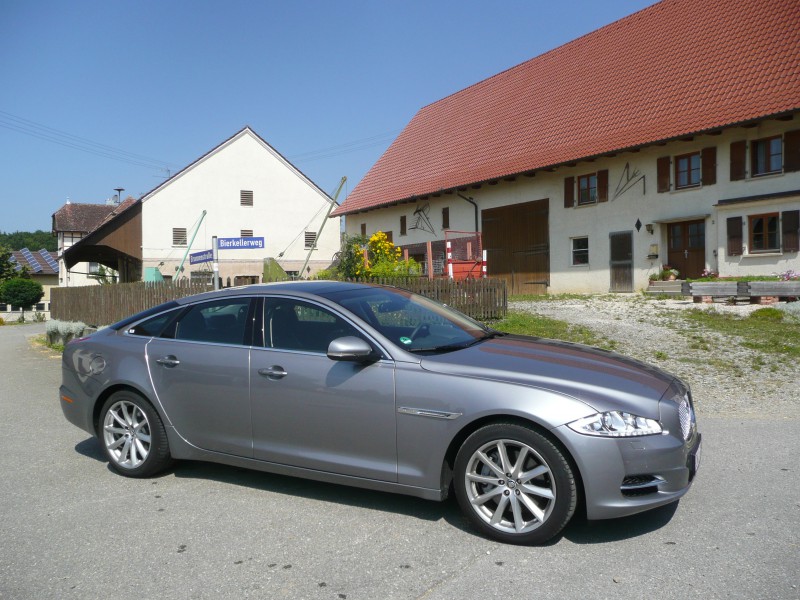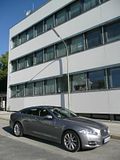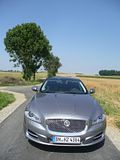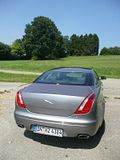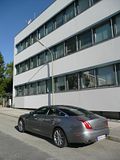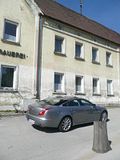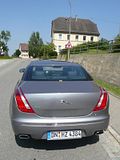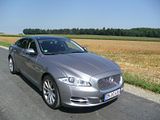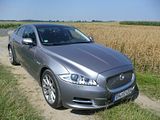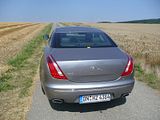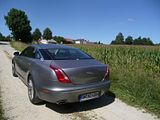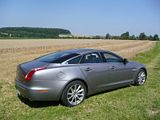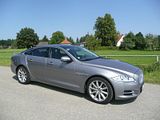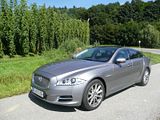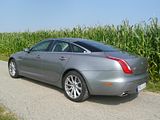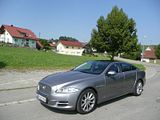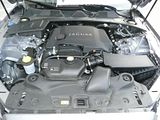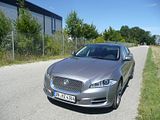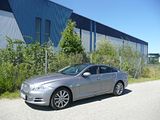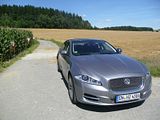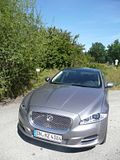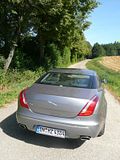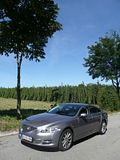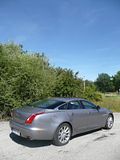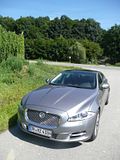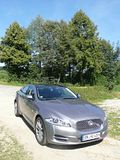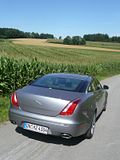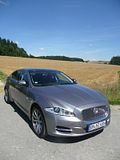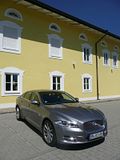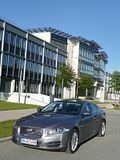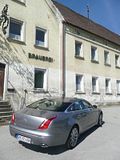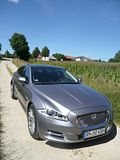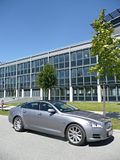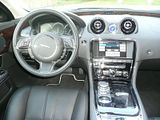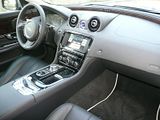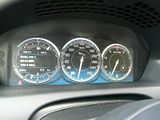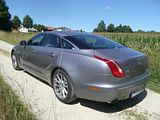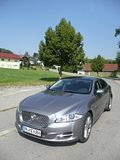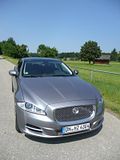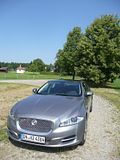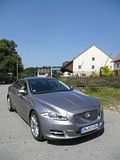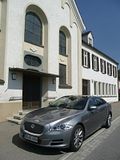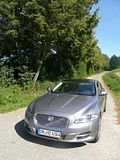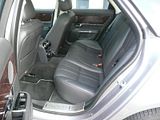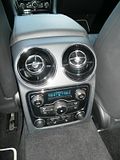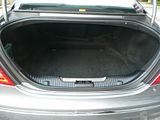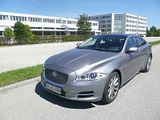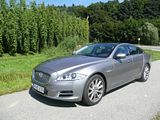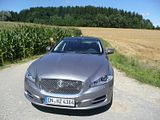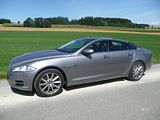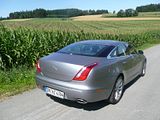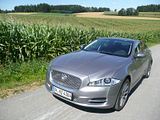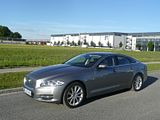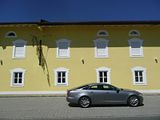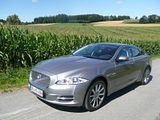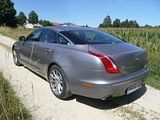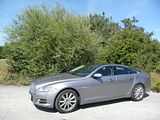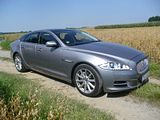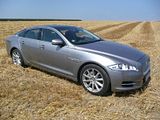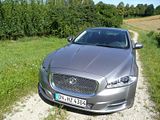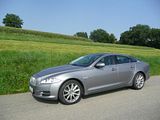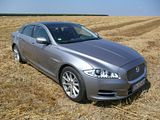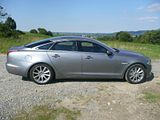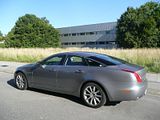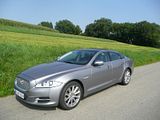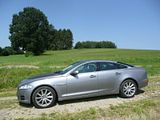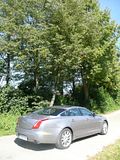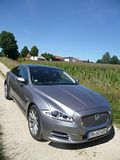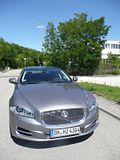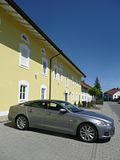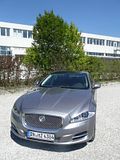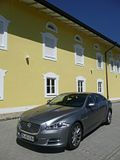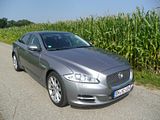
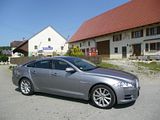

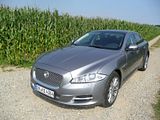
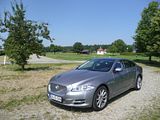
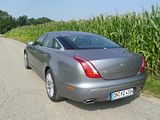
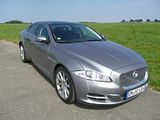
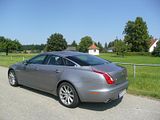
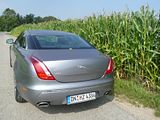
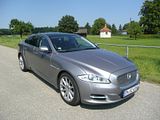
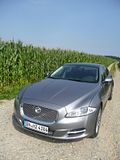
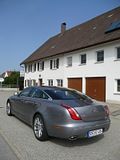
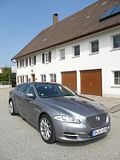

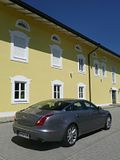

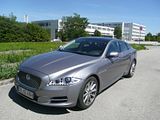
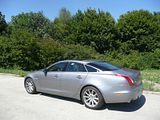
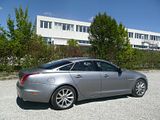
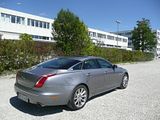
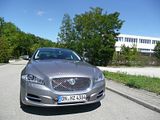

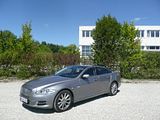
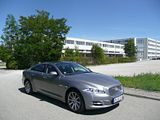

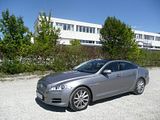
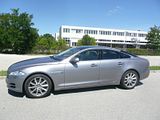
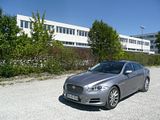

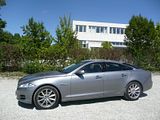

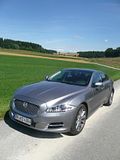
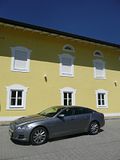
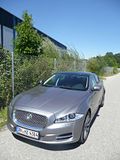
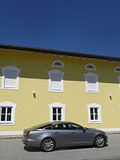
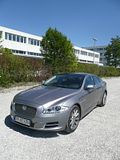

Ever since the launch of the first Jaguar XJ6 in 1968, the Jaguar has been a very desirable car indeed. Sadly, although the basics of the car have always been excellent, the reliability and associated dealer servicing were not, and for many years, Jaguar owners expressed a certain amount of frustration and disappointment with their cars for entirely understandable reasons. The launch of the all new “XJ40” model in 1986 did not really help matters as whilst build quality and protection against rust had improved, increased complexity from more electronics meant that many saw this car as something of a retrograde step over the much loved Series 3. By now, Jaguar had started to lose out in sales to the dread rivals BMW and Mercedes, and then in the late 1980s, Audi and Lexus also entered the market with excellent cars. Undeterred, a program of continuous evolution and enhancements meant that the Jaguar continued to get better. By the time of the launch of the “X308” car in 1998, the press were back to singing the praises of the XJ, and those who could afford it found a car that was a pleasure to own as well as drive. A new S Class Mercedes launched the following year meant that Jaguar could not afford to stand still, though, and the X308 car was really a modernised version of a car launched in 1986, but designed some time before that, so it was clear that an all new model was called for. That came in 2004, and when the aluminium bodied “X350” cars were launched, it was commonly agreed that Jaguar once again had a true class leading competitor, but sales volumes did not reflect this, even when Jaguar added the oh-so-important diesel engine to the range.
Criticism seemed focused on the appearance and indeed the car had very clear and deliberate lineage to the original XJ6 of 1968. When planning the replacement, it became clear to Jaguar that they need to make a bold move and design a car which looked completely different from all the antecedents. Having trialled the new look with 2007’s XF saloon, the “X351” model XJ was most definitely different, with an appearance like no XJ before it. Opinions were immediately divided, with many now bemoaning the fact that it did not look like a Jaguar, but plenty of people, me included thought it looked fantastic. Whilst the outside divided opinion, there was more agreement that the interior was particularly well resolved, and this was certainly what I thought when I first saw the car. At that point, I wondered if I could ever find a way of getting to drive one of these supreme vehicles – and the road tests published in 2010 when the car went on sale pointed out just how supreme the car is – and now, thanks to Herr Hertz, that time has come. My most recent trip to Munich saw a Vapour Grey metallic car parked up in a space in the rental car garage with my name on it. I was delighted and excited to see if the car was really as good as I was hoping it would be. Read on.
After a number of years applying clever engineering and manufacturing approaches to try to improve the economy of their cars, Jaguar finally realised that that what they really needed was a good diesel engine, and now it is notable that in Europe, over 90% of all XJs sold are powered with fuel from the black pump. Whilst the engine is among the smoothest and quietest oil burners around, it is still not quite as whisper quiet as the legendary petrol powered Jaguars of yore. Fear not, though, this is a supremely refined engine, and even the staunchest opponent of derv power really should have nothing to fear. The 3.0 litre unit is the same as can be found under the bonnet of the XF, but whilst in that car two different power outputs are offered, for the larger XJ, only the more potent 271 bhp model is available. That might not sound like a lot for such a large car, but trust me, on the road the XJ does not feel anything other than brisk, even if it is not quite as rapid as the truly sporting XF 3.0 D S car. With the SmartKey somewhere in the vicinity (and there is no slot on the dash in which to insert it), put your foot on the footbrake and press the “Start” button to the right of the wheel, and you are just about aware that the engine has come to life. Even at idle, the dreaded diesel rattle is extremely well suppressed though, and there is not a lot of aural evidence that this is not a petrol car once you get underway. The engine is silky smooth at all times, and revs willingly all the way to the 4500rpm red line. Not that you are likely to extend the unit that hard, as you gain momentum very rapidly once underway thanks to the prodigious levels of torque (the maximum is 600nM) and gearing that seems particularly well judged to make the most of the engine’s power. There are eight gears in there, but you will struggle to detect the gearchanges assuming that you let the car make them for itself, instead you will simply get acceleration from almost any speed to any other. Thanks to relatively heavy autobahn traffic and more than a few roadworks sections, with temporary speed limits in force, I did not manage to exceed more than about 180 km/h, but I can tell you that at that speed the engine feels like it is hardly doing anything, and all you hear is a bit of wind noise. When brisk acceleration was called for to overtake slow moving farm vehicles on the country roads of Bavaria, I barely had to flex the right foot, and I noted that even with a sudden burst of oomph, the rev counter recorded no more than 2500rpm, so there was clearly a lot more available had I needed it.
This level of performance is matched with impressive economy. The trip computer told me that I averaged 6.3 litres/100km on the first day of the test and 5.8 l/100km on the second. When it came to returning the car, I had covered 949km and the tank required 67.6 litres to fill it up again. This averages out at a creditable 41.7 mpg. Better still, there was still nearly 1/3rd of the tank unused, so the range on this car is staggeringly impressive. The good news does not stop there, as this is a fun car to drive and one which belies its size very well. The steering wheel is particularly nice to hold, and with well weighted steering which gives you an excellent idea of what the front wheels are doing. This is a large car and you probably would not want to throw it around the bends like you might choose to do in a hot hatch, but everything I have read suggests that you could and the XJ would almost relish you doing so. I certainly had no anxieties taking swooping bends on autobahn intersections at speed, and although you could just feel that the motive power was coming through the rear wheels, this never felt like an unruly car. It also never felt like the large car that it is. That is also true when you are at much lower speed trying to manoeuvre it. There are all round parking sensors and a very good rear camera which projects a clear image on the satellite navigation screen. You really do need that as the steeply sloped rear screen and relatively long overhang means that you really cannot tell where the back of the car is, but thanks to the camera, and good visibility in all other directions, this was not an intimidating car to park up. There is a blind spot alert system in the door mirrors, illuminating when a car is alongside you on either side. The Good News on the dynamics continues with the brakes which were spot on, and the ride which seemed to smooth out all but the worst ridges on the roads of Bavaria where I drove the car. The only slight disappointment was that at speed, there was some trace of wind noise, but maybe this is because the engine and tyre noise is so well suppressed that it was evident, though far from seriously intrusive.
It was the interior of the XJ that impressed me more than anything else when I first sat in one at the Silverstone Classic in 2009 at the time of the car’s launch, and a weekend spent behind the wheel just reinforced my conclusion that this is a particularly nice and very special place to be. Jaguar have done an excellent job at combining modern technology with enough elements of British tradition to come up with something which is distinctive and appealing. Better than that, they avoid the temptation to deliver something that is overly complex to use or overly fussy to look at. A thick wooden inlay on the door casings continues as a thinner inlay around the top of the dash under the windscreen. The rest of the dashboard is trimmed in a high quality leather, as are the steering wheel, the door casings and the seats. There are three dials presented under a single binnacle, which only illuminate when the ignition is powered on. The central one is the speedometer, the right hand one the rev counter and the left hand one shows fuel level and water temperature. What I particularly liked is that the white markings are brighter in the vicinity of the current reading, so if, for instance you are doing 100 km/h, then the markings for 80, 100 and 120 are brighter than the other ones which are greyed out a bit, which makes it very easy to make an at a glance reading. The left hand dial switches to show a repeat of the satellite navigation instructions when the unit is alerting you to an imminent junction or turning, which is a neat touch. The centre of the dash contains a slightly recessed display screen for the satellite navigation, audio selection and vehicle settings which has very clear graphics and is touch sensitive, so very easy to use. Below this are some residual buttons for the audio unit and the climate control. Quality feeling column stalks operate indicators, lights and wipers and there are just a few other buttons on the dash for those lesser used functions such as the instrument rheostat. There are some repeater buttons on the steering wheel for the audio unit, along with the cruise control system. It all looks far cleaner and simpler than what you will find in any of the XJ’s rivals and it is all very easy to use, with excellent ergonomics and a feeling quality and inspired design.
Whilst front seat occupants of any XJ have never had anything about which to complain, those in the back have generally found a space that was far less commodious than in the S Class or 7 Series, and a boot that was rather smaller as well. This model of XJ forces no such compromises on the occupants, even in the short wheelbase model that I tested. Whilst I did not doubt that rear legroom would be ample, the sloping roofline did make me worry about headroom, but when I sat in the car, I found no issues at all. Although there was an acre of space for a prospective rear seat occupant sitting behind me, when Christian Wimmer, at 6 foot 3″, someone far taller than my 5 foot 6″, adjusted the front passenger seat to suit his proportions, I did notice that there was not that much rear seat space left, largely because of the angle of the backrest he had selected, and so I can see why there could be a case for the long wheelbase car. The boot on the XJ opens and closes electrically, with the need simply to press a neat button on the underside of the lid for it to close. The luggage area is a good size, in all dimensions, width, length and height meaning that 4 occupants could pack plenty for the long journey across a continent which the XJ would so readily take in its stride. Inside the cabin there is a good sized glovebox which is opened by a microswitch above the opening area, a good cubby under the central armrest, door bins and a couple of lidded areas on the centre console which also serve as cup holders. Rear seat passengers have door pockets and map pockets on the back of the front seats.
As you might expect for a car in this class, equipment levels are generous, and although there is a lengthy options list, you may not feel any particular need to indulge much in its contents. UK and German markets are offered this model of the XJ in three trim versions: Luxury, Premium Luxury and Portfolio, which in 3.0 Diesel form retail in the UK at £56,260, £60,060 and £67.260 respectively. The Luxury trim includes 19″ Aleutian wheels, bond grain leather seat trim, a panoramic electric sun roof, dual zone climate control, an 8″ touch sensitive screen for the satellite navigation and to project images from the rear parking camera, parking sensors, a 12 speaker DAB audio unit, 3 position memory electric seats, a heated front windscreen, an electrically adjustable steering column with heated steering wheel, an electric boot release and closing mechanism among many other standard features. Premium Luxury brings you a different style to the 19″ alloys, and an upgraded 380W Audio unit. The Portfolio trim brings 20″ wheels, upgraded seat trim with front massage, heated and ventilated seats, a further upgrade to the audio unit, aluminium runners in the boot Long wheelbase models offer 4 zone climate control, rear business trays, privacy glass and a separate electric blind for the rear part of the sun roof. As well as the extra legroom coming from the elongated wheelbase, these cars are easy to spot as there is an L added to the badge on the boot.
Be in no doubt, the XJ is an absolutely superlative car. I liked the new style when I first saw it, and I loved the interior when I first sat in it. Now I have driven it, my admiration for what Jaguar have achieved with a fraction of the development budget available to the dread German rivals means that I am convinced that this is a formidable achievement. Many motoring journalists rated this car as better than the once indomitable Mercedes S Class, and having driven both and knowing just how good the Mercedes is, I can easily see why they reached their conclusion, and am in absolute agreement with them.

